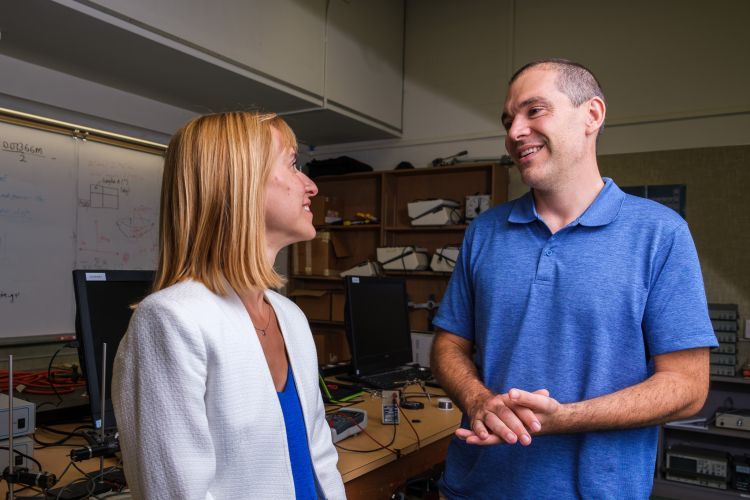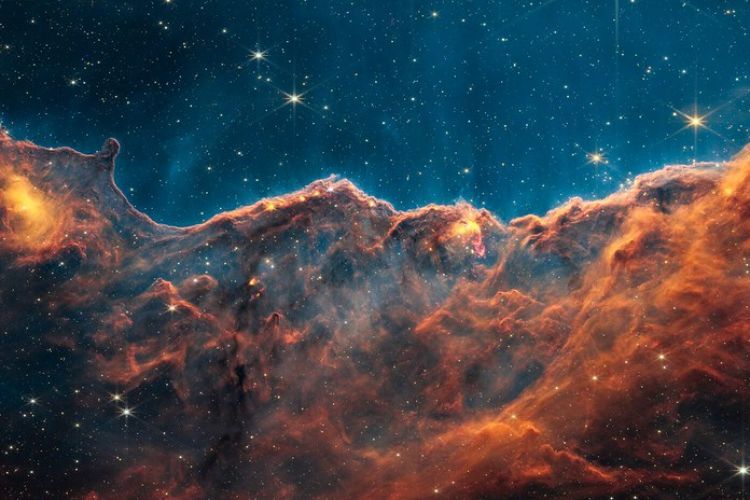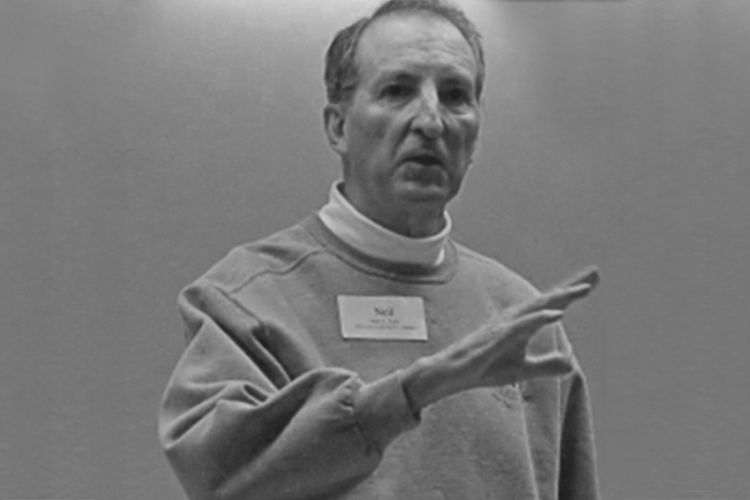Breadcrumb
Professor untangling 'Webb' of outer space mysteries

Associate Professor of Physics Guillermo Barro with his wife and colleague Associate Professor of Physics Elisa Toloba
Associate Professor of Physics Guillermo Barro’s work is similar to an archaeologist—but with a focus on distant galaxies rather than Earth.
Using the new James Webb Space Telescope, Barro is able to look into the universe’s past to learn more about how it has evolved and find some of the first galaxies formed after the Big Bang.
Barro is part of an international team of scientists selected by NASA to be among the first to study images and data obtained by the powerful telescope, which launched one year ago.
Barro provides insight into the mesmerizing images captured by the telescope, what they reveal about the universe and what they tell us about our own galaxy.
Share an overview of your work with the Webb telescope.
We use the telescope as a time machine. We take all these pictures and using calculations we can figure out which galaxies are close and which ones are farther away. Then you can create a time sequence to look at how galaxies evolve.
One of the most exciting things with Webb is that you can find the farthest galaxies. Expansion of the universe makes things look red, so you can take a picture and look for the most red things.
What is your research focus?
I focus on the most massive galaxies. The question I try to answer is why do they die? Galaxies are factories that turn gas into stars, but eventually they run out of gas and stop making stars. We want to understand why and when that happened.
What was your reaction when you saw the first Webb images?
You really have no words. You have a theoretical estimate of how it is supposed to work and how many times better it is than the Hubble (telescope), but until you see it, you cannot believe it. The images are like going from an old CRT TV versus 4K. It is amazing.
You immediately see detail, and because it works in a different wavelength, for some galaxies, it's night and day. It’s not just that the images are crisp. All of a sudden, where you could only see a tenuous thing, you can now see all the spiral arms and things that were not visible before. They are very powerful images.

One of the Webb telescope's first images released by NASA showing the Carina Nebula.
Compare the Webb telescope and the Hubble Space Telescope (launched in 1990).
The main difference, other than it is much bigger and advanced, is that it was made to observe what we call the infrared, so that’s the light we cannot see with our eyes. That’s why the pictures don’t look exactly the same. There are things Webb can see that Hubble could not.
What was one of the first discoveries you and your team made?
The first few papers that we got out were on the most distant galaxies. We use the word “redshift.” The higher the redshift number, the more distant the galaxies. Before James Webb it was six or seven. Now we’re up to 12.
That's one thing that stands out right away because it doesn't require a lot of complicated calculations. You can look at the picture and try to guess which one is the most distant galaxy by just looking for red tiny dots.
What have you been most interested to observe so far?
If you look at the galaxies, in principle, when you go back in time, you should find fewer and fewer stars in the galaxy. We are finding a few strange objects that seem to have way too many stars for the age of the universe. They formed way too fast. Galaxies around that time of the universe should be tiny little tadpole galaxies, not massive whales.
That spiked our interest. What are these objects? Is there something that we are not understanding? We are definitely missing something there.
How can information about distant galaxies help us better understand our own?
We cannot see our own Milky Way because we're inside it. And we cannot see the past of this galaxy. But if we think this galaxy is similar to another one, we can try to make the evolutionary connection. We can look at galaxies like the Milky Way, with similar properties of size, or shape or the number of neighbors. Is this in an isolated region of the universe? Things like that. Then we can make the case that our own galaxy and other galaxies formed in a similar way.
How will this research impact people in the future?
The James Webb Space Telescope is trying to answer some of the most fundamental questions about how the universe, the stars and the planets formed. Many of the answers to those questions could simply not be answered by the previous generation of telescopes.
The unprecedented technical capabilities of the Webb telescope allow us to see further and better to find the first galaxies or to observe the atmosphere of other planets looking for signatures of life or at least habitability. In the future, many of the textbook answers to those questions will be written based on the observations that we are conducting now.
Will students be able to work with you on your research?
In physics, our students do an independent research project when they are seniors. They work with us for a semester and sometimes over the summer, so students working now with me will get to work with James Webb data for the foreseeable future.
They will be working on my primary science projects which are aimed at understanding the formation and evolution of galaxies through cosmic time. In more practical terms, they will most likely work with the telescope’s imaging data to identify galaxies and measure their colors to try to infer fundamental properties, such as how far from us they are or how many stars they have.





